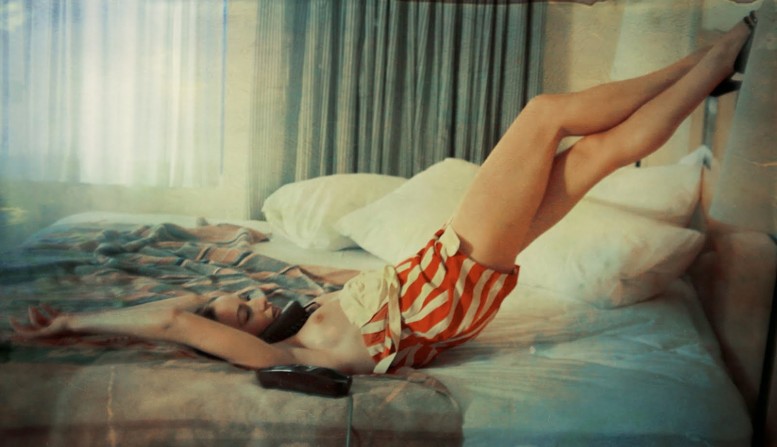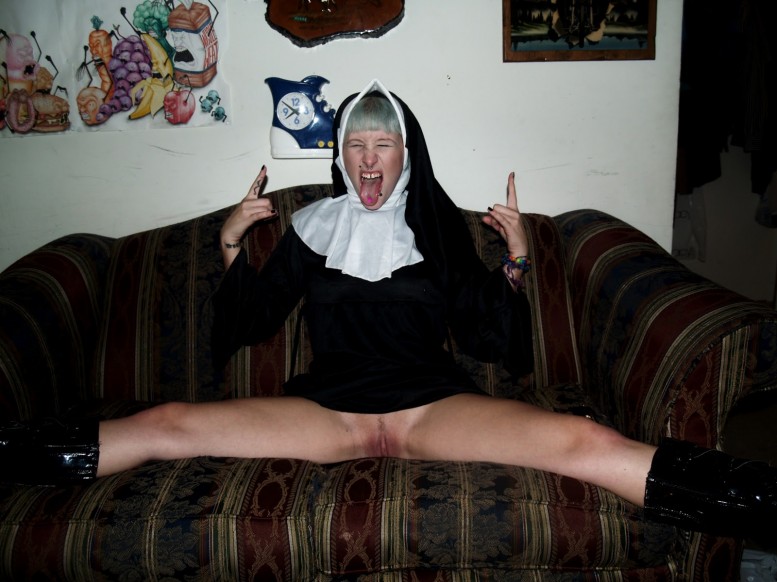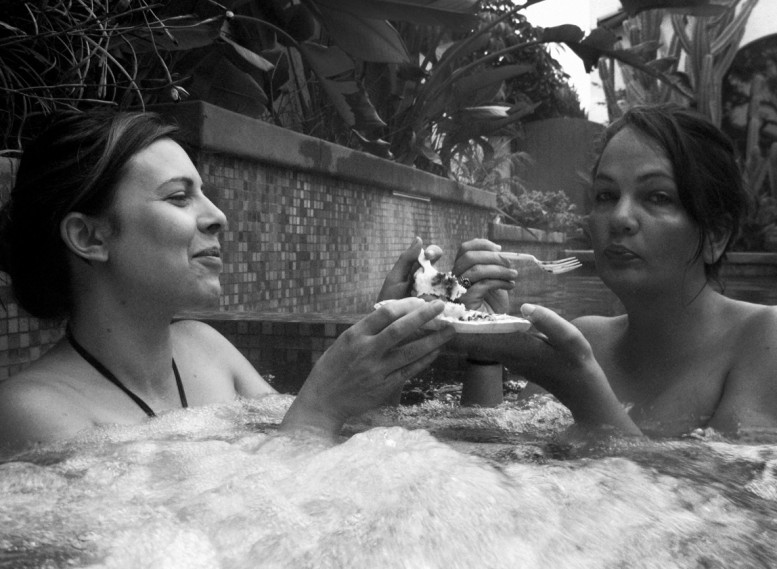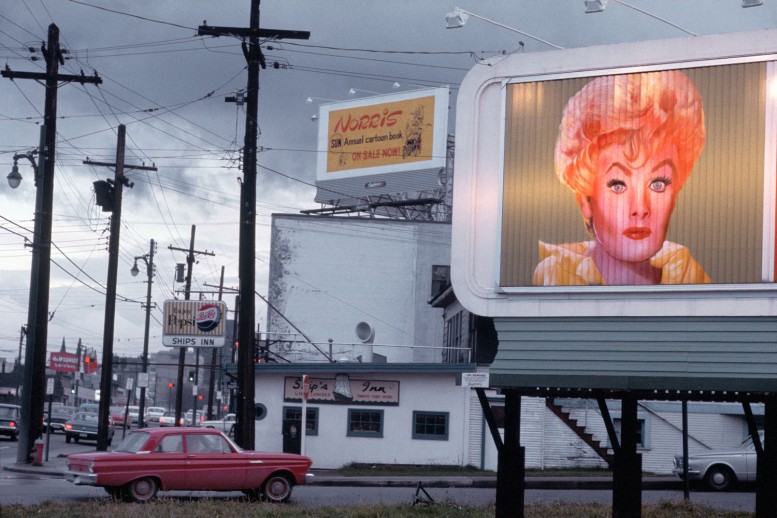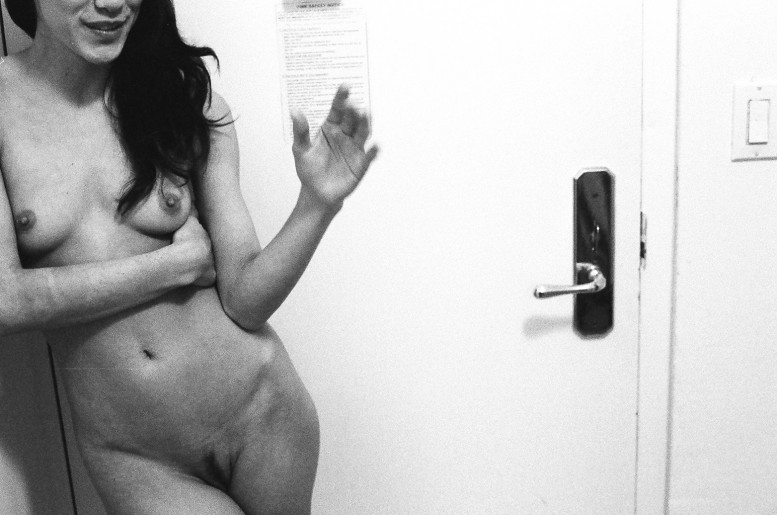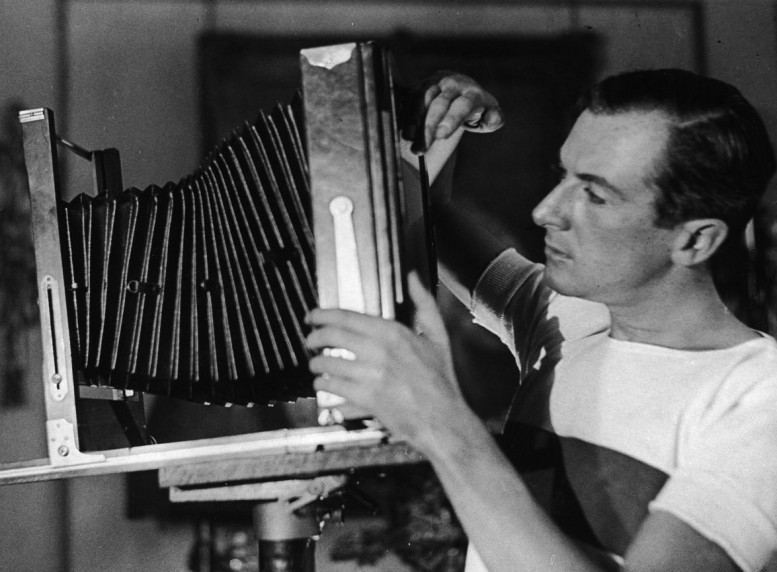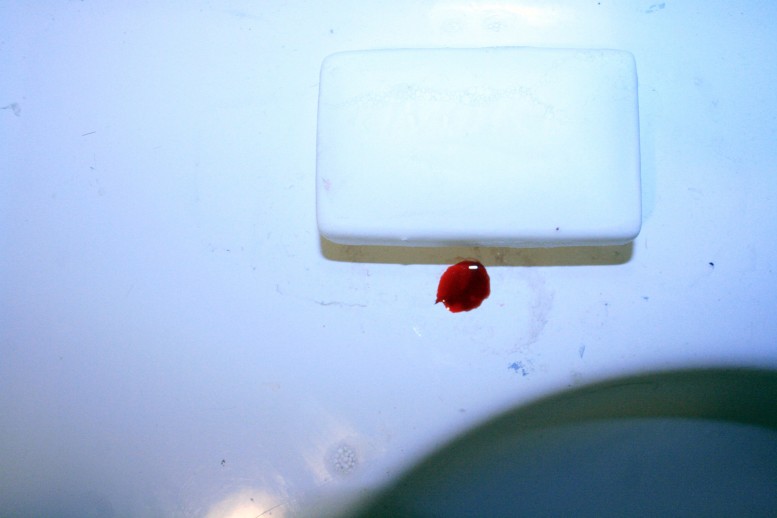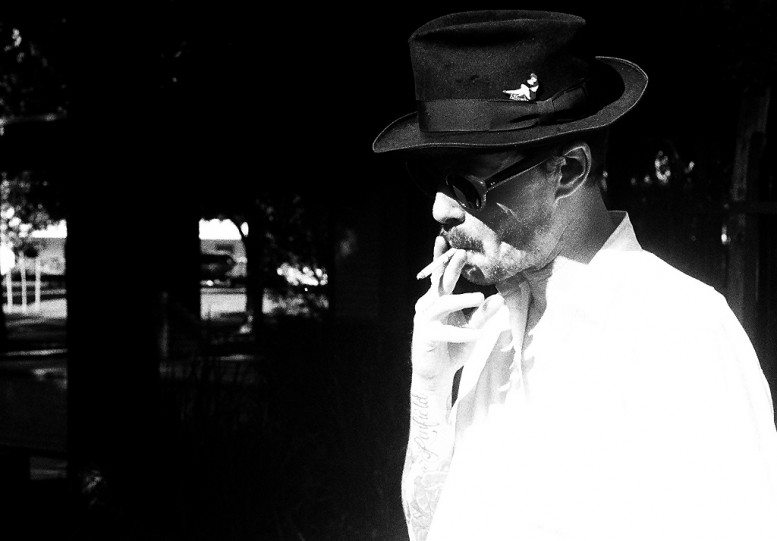Eugène Atget exhibit at MoMA
MoMA in New York will soon host from 6 February to 9 April next year, a retrospective on French photographer Eugène Atget (1857-1927). The title of the exhibition, “Documents pour artistes”, refers to the sign which hung on the door of Atget’s studio in Paris. Atget officially started photography in 1890, and aimed to capture the city of Paris in order to offer the material documentation to other artists.
Ans Westra: Washday at the Pa
NEW ZEALAND – Forty-seven years ago Ans Westra provided the text and forty-four images for a Department of Education journal made for primary schools. Titled Washday at the Pa the book followed a day in the life of a rural Maori family of eight children awaiting relocation to a state house in the city. Following protests by the Maori Women Welfare League Washday at the Pa was controversially withdrawn from circulation by the Department of Education. The League condemned Westra's depiction of the poor, rural Maori family living in sub-standard housing as untruthful and inaccurate. Westra defended the integrity of the images and as copyright owner later in 1964 published the second edition through the Caxton Press. Westra took this opportunity to add twenty-two new images, some introducing whole new episodes to the story. An new exhibition at the Suite Gallery in Wellington, New Zealand supports the publication of a new edition of Washday at the Pa, which features images made for the 1964 first and second editions of the book as well as images made by Westra in 1998 as part of a subsequent project: Washday at the Pa Revisited.Accompanying Westra's 35 uncropped images is text by Mark Amery. Washday at the Pa is on view at the Suite Gallery until November 26.
The Radical Camera
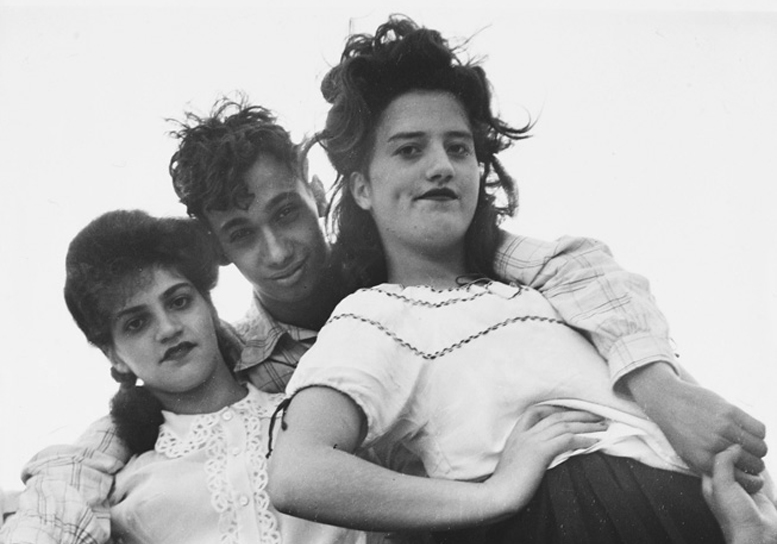 Sid Grossman, Coney Island, 1947
Sid Grossman, Coney Island, 1947
In 1936 a group of young, idealistic photographers, most of them Jewish, first-generation Americans, formed an organization in Manhattan called the Photo League. Their solidarity centered on a belief in the expressive power of the documentary photograph and on a progressive alliance in the 1930s of socialist ideas and art. The Radical Camera, on view starting tomorrow at the Jewish Museum in New York, presents the contested path of the documentary photograph during a tumultuous period that spanned the New Deal reforms of the Depression, World War II, and the Cold War. The Radical Camera: New York's Photo League, 1936-1951 is on view November 4 through March 25.
Layover
Caity & Sam
FRED HERZOG: PHOTOGRAPHS
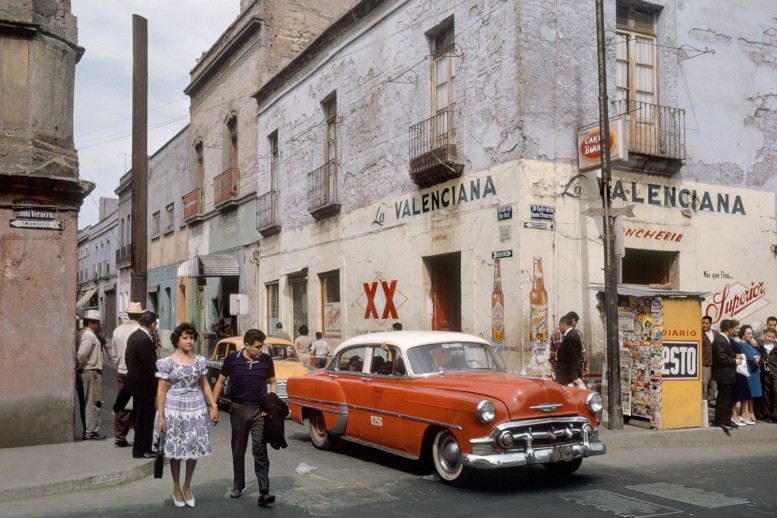 Herzog: Mexico City with Chevy, 1963
Herzog: Mexico City with Chevy, 1963
The definitive book about the stunning oeuvre of a pioneer of colour photography—Vancouver's Fred Herzog.For more than five decades, Fred Herzog has focused his lens on street life, and his striking colour photographs—of vacant lots, second-hand shops, neon signs and working-class people—evoke nostalgia in an older generation and inspire wide-eyed revelation in a younger one. The images that we now consider iconic once relegated Herzog to the margins: his bold use of colour was unusual in the 1950s and ’60s, a time when art photography was almost exclusively associated with black-and-white imagery. Fred Herzog has worked with Kodachrome slide film for over 50 years, but only in the past few years has technology allowed him to make archival pigment photographic prints of exceptional colour and intensity. Fred Herzog: Photographs, a new book out now by Douglas & McIntyre, showcases this innovative artist’s impressive collection in a beautifully crafted volume.
Black Gospel
Photograph by Kevin Hayes
The Mexican Suitcase
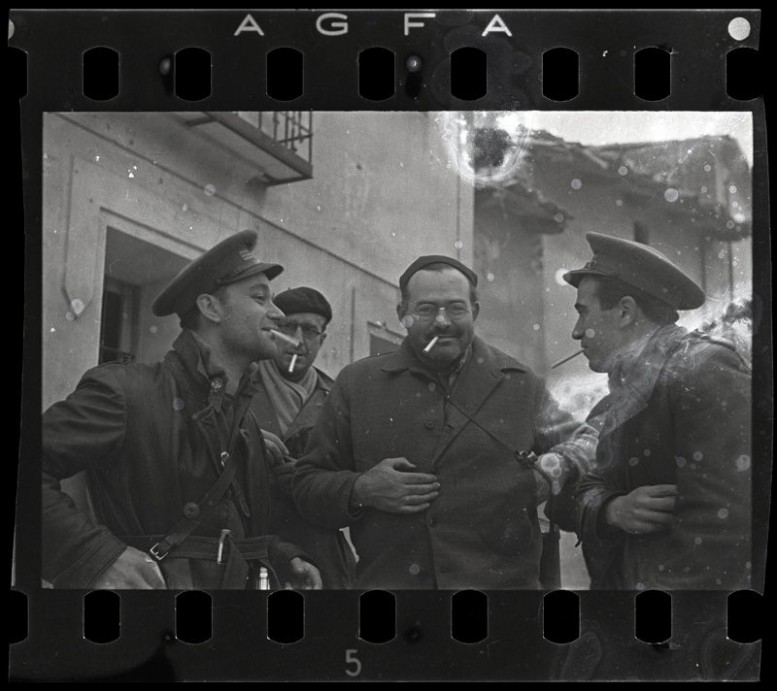 Robert Capa, [Ernest Hemingway (third from the left), New York Times journalist Herbert Matthews (second from the left) and two Republican soldiers, Teruel, Spain], late December 1937
Robert Capa, [Ernest Hemingway (third from the left), New York Times journalist Herbert Matthews (second from the left) and two Republican soldiers, Teruel, Spain], late December 1937
The Mexican Suitcase will for the first time give the public an opportunity to experience images drawn from this famous collection of recovered negatives. In December 2007, three boxes filled with rolls of film, containing 4,500 35mm negatives of the Spanish Civil War by Robert Capa, Gerda Taro, and Chim (David Seymour)—which had been considered lost since 1939—arrived at the International Center of Photography. These three photographers, who lived in Paris, worked in Spain, and published internationally, laid the foundation for modern war photography. Their work has long been considered some of the most innovative and passionate coverage of the Spanish Civil War (1936–1939). Many of the contact sheets made from the negatives will be on view as part of the exhibition, which will look closely at some of the major stories by Capa, Taro, and Chim as interpreted through the individual frames. These images will be seen alongside the magazines of the period in which they were published and with the photographers' own contact notebooks. On view now at the Museu Nacional d'Art de Catalunya until January 15.
Tobias Zielony: Manitoba
On view at the MMK ZOLLAMT – Tobias Zielony's “Manitoba” is a series of works capturing the lives of teenage gang members of Native American origin in their urban surroundings in Winnipeg, the provincial capital of the Canadian state of Manitoba. In the tradition of the classical photojournalistic feature, Zielony makes use here of various pictorial genres, presenting individual portraits and group photos in which the gang members pose, as well as views of the architecture and landscape in Winnipeg and on a reservation. Apart from his subjects’ globalized dress codes and gestures, what interests the artist most are the specific regional histories of the Native Americans in their socio-economic context. Likewise to be shown at the MMK Zollamt, the film The Deboard (2008) is dedicated to the story of a gang member’s withdrawal from his gang. The term “deboard” refers to the exit ritual a person must subject himself to before he can begin a new life as a free man. In his film, Zielony impressively combines coarse-grained black-and-white scenes of the ex-convict’s environment with the subject’s own account of his withdrawal from the gang.The exhibition will be accompanied by a catalogue documenting the artist’s working process. Tobias Zielony: Manitoba will be on view at the MMK Zollamt from November 12 to January 15.
Cecil Beaton: The New York Years
From the 1920s through the ‘60s, Manhattan’s artistic and social circles embraced British-born photographer and designer Cecil Beaton (1904-80). Opening today, Cecil Beaton: The New York Yearsbrings together extraordinary photographs, drawings, and costumes by Beaton to chronicle his impact on the city’s cultural life. Beaton’s relentless energy and curiosity spurred him to pursue new fields, from fashion and portrait photography to costume and scenic design for Broadway, ballet, and opera, and to put his own aesthetic stamp on each of these endeavors. Cecil Beaton: The New York Years is on view at the Museum of the City of New York until February 20, 2012.
Francesca Woodman Retrospective
Francesca Woodman (1958-1981) was an artist decisively of her time, yet her photographs retain an undeniable immediacy. Thirty years after her death, they continue to inspire audiences with their dazzling ambiguities and their remarkably rich explorations of self-portraiture and the body in architectural space. This November, at the San Francisco Museum of Modern Art, marks the beginning of a retrospective, the first in the United States in more than two decades, that explores the complex body of work produced by the young artist until her suicide at age 22. Together with Woodman's artist books and videos, the photographs on view form a portrait of an artist engaged with major concerns of her era — femininity and female subjectivity, the nature of photography — but devoted to a distinctive, deeply personal vision. On view at the SFMOMA from November 5, to February 20, 2012.
Self Publish, Be Naughty
In March 2011, independent book publishers Self Publish, Be Happy put out a call for "naughty pictures" and in response received over 5000 photographs. A new book, Self Publish, Be Naughty, showcases 122 of these photographs by 75 different artists. The photographs, presented in a continuous flux, offer a powerful and uncompromising exploration of contemporary approaches to the themes of sex, desires and taboos within photography. From the surreal to the mundane, from the allusive to the graphic, the images challenge the tradition of erotic photobooks and their very ghettoised approach to desires.
Barry Feinstein, Rock n' Roll Photographer Dead

Barry Feinstein, who shot more than 500 album covers, including Bob Dylan's 'The Times They Are A-Changin' ' and George Harrison's 'All Things Must Pass' has died in Woodstock, New York.
Marilyn Monroe "12 photographs"
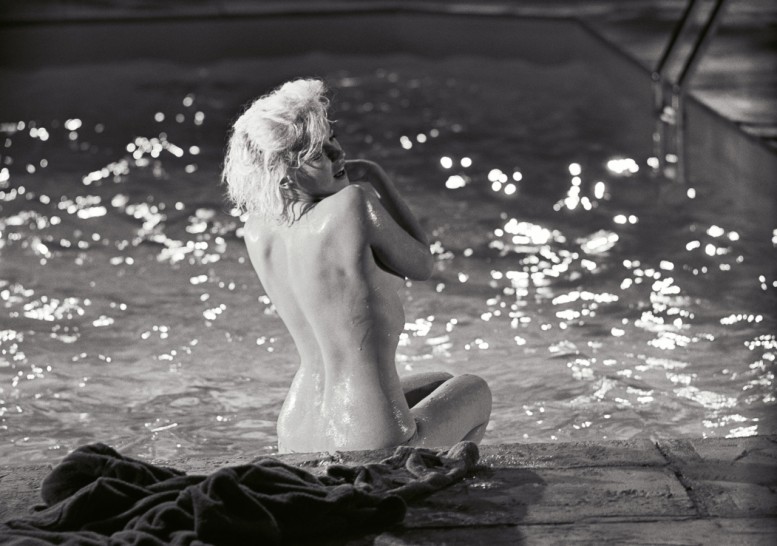
"So we think of Marilyn who was every man's love affair with America, Marilyn Monroe who was blonde and beautiful and had a sweet little rinky-dink of a voice and all the cleanliness of all the clean American backyards. She was our angel, the sweet angel of sex, and the sugar of sex came up from her like a resonance of sound in the clearest grain of a violin. Across five continents the men who knew the most about love would covet her, and the classical pimples of the adolescent working his first gas pump would also pump for her, since Marilyn was deliverance, a very Stradivarius of sex, so gorgeous, forgiving, humorous, compliant and tender that even the most mediocre musician would relax his lack of art in the dissolving magic of her violin. Divine love always has met and always will meet every human need" -- Norman Mailer. Now on view at the Duncan Miller Gallery, Marilyn Monroe "12 Photographs," by photographer Lawrence Shiller, until November 26.
Adarsha Benjamin Self Reflection

Photograph by Adarsha Benjamin
Victoria on the Phone
